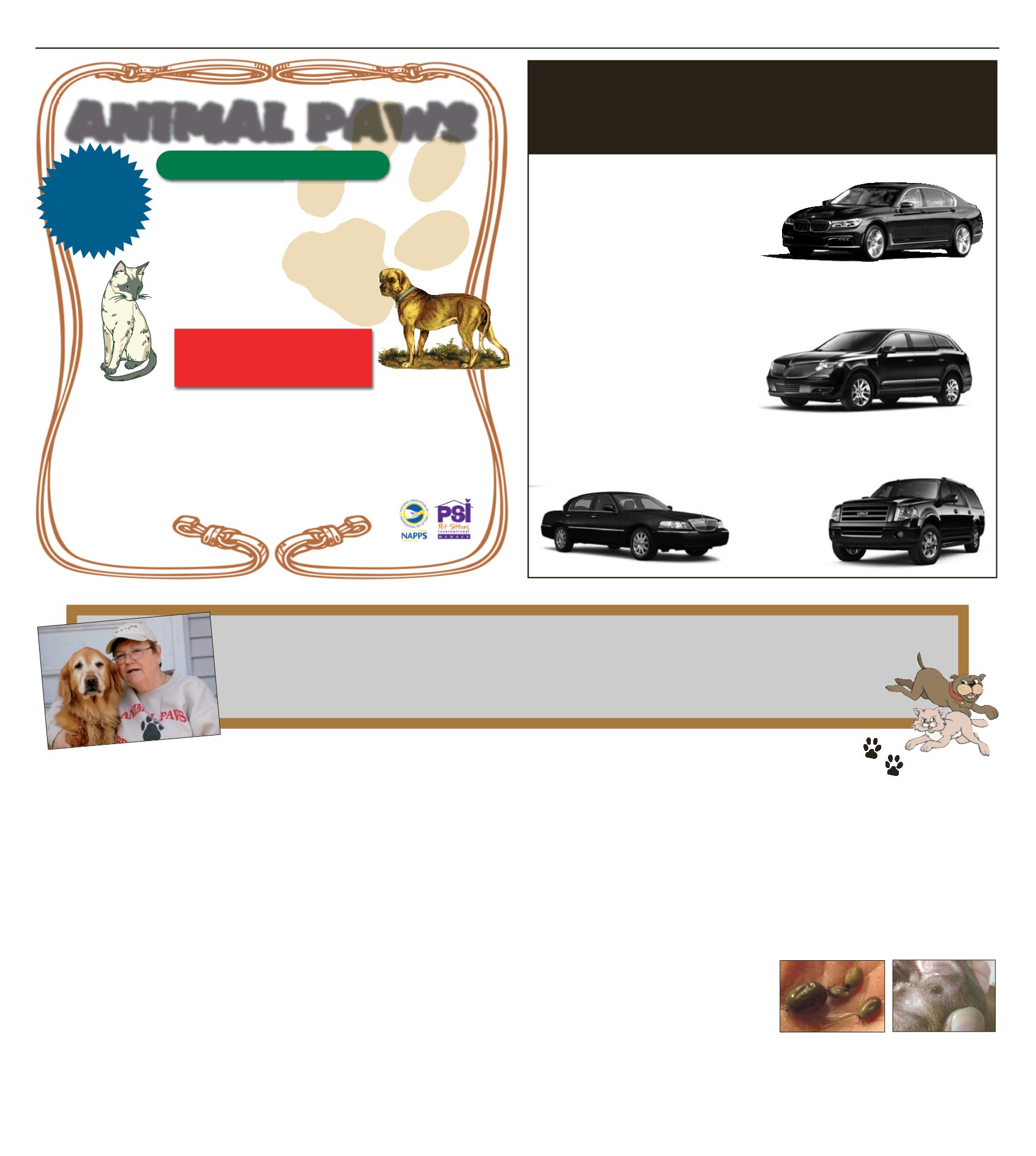

PAGE 82
THE BERNARDS-RIDGE CONNECTION
JUNE/JULY/AUGUST 2016
20 Years Emergency Veterinary Medicine Behind Us. ANIMAL PAWS Please call for FREE consultation. Last minute bookings for existing clients. (no late fee) BONDED & INSURED Nominated by National Animal Pet Sitting Association for 2015 for one of the Best Pet Sitting Services in the Nation. PETS ENJOY BEING HOME! Pet Sitting, LLC 15 Years of Loving Professional Pet Sitting Experience Cell 908-963-0311 email: michele@animalpaws.net animalpaws.org Vacations, daily dog walking, overnight stays, client education on animal care. We do transporta- tion, give insulin injections, SQ fluids, dog hikes. Country Plaza Limo, Inc. !). 31%%3 /7 %!0!#+ %6 %12%8 O VER 30 Y EARS OF C AR T RANSPORTATION S ERVICE &&)#% 908-234-0264 888-234-0394 !7 908-234-2710 %" #/4.3180,!9!,)-/ #/- -!), #0,)-/ 8!(// #/- Member of Limousine Associations of New Jersey 8 00/).3-%.3 !*/1 1%$)3 !1$2 ##%03%$ : ,, !*/1 1)5!3% )10/132 : /#!, 1)02 /#3/12 #(//,2 (/00).' /#!, 11!.$2 : )..%12 (/62 (/00).' 42).%22 1)02 : 0%#)!, %,)5%18 /& !#+!'%2 %32 : !1 1)5%1 "8 3(% /41 &/1 )23!.#% 1!.20/13!3)/. : 1!.20/13!3)/. &/1 0%#)!, ##!2)/. 4%232 5%.32 TICKS IN DOGS By: Michele Patanio, Animal Paws Pet Sitting LLC 908-963-0311 animalpaws.net Ticks are parasitic organisms that attach themselves by mouth to the skin of dogs, cats, and other mammals. These parasites feed on the blood of their hosts and can cause toxicosis or hypersensitivity, an d in some cases blood loss anemia. Ticks can also be transmitters of bacterial or viral dis- eases. The skin, the lymph a tic and immune systems, and the nervous sys- tems, can be negatively affected if gone untreated. Ti c ks come in four stages: egg, larvae, nymph, and adult. Cats are also prone to tick infections. SYMPTOMS AND TYPES Ticks may be visibly present on the skin of the animal, especially as they grow. Ticks have a hard backed shield and can be felt as small bumps d u ring a palpation (touch exa m ination) of the skin, or during regular pe t ting. There may also be other symptoms present if a tick b orne disease develops. CAUSES Ticks are attracted to hosts for the warmth, presence of carbon dioxide on the skin, and other associated odors that the host gives off. Animals acquire ticks by being in direct physical contact with environments t hat harbor ticks (e.g., high grass areas, wooded areas). DIAGNOSIS The skin will be inspected to look for ticks or tick feeding cavities, and labo- ratory tests will be ordered to review the blood for blood borne illnesses or other tick related illnesses that may hav e develop e d. SAFE TICK REMOVAL If you find a tick on your dog, don’t panic! Follow these quick and easy steps to safely remove the pest. Step 1: Get your gear • Pair of gloves • Clean pair of tweezers or a com- mercial tick remover • Antiseptic • Isopropyl alcohol Step 2: Remove the tick Wear gloves while removing the tick to avoid contact with your skin (ticks can transmit diseases to people, too). If you're using tw e ezers: • Grasp the tick as close to your dog’s skin as possible, but be gentle! Try not to pinch your dog's skin. • Pull outwar d in a straight, steady motion, making sure that you’ve re m oved the entire tick, since anything left behind could lead to an infection. If you're using a tick remover: • Gently press the remover against your dog’s skin near the tick. • Slide the notch of the remover under the tick. • Continue sliding the remover until the tick is caught in the small end of the notch and is pulled free. (The tick will remain in the bowl of the remover.) AND REMEMBER YOUR VETERINARIAN IS ALWAYS T H ERE FOR YOU. I HOPE YOU ALL HAVE A WONDERFUL SUMMER WITH YOUR 2 & 4 FOOTED FURRY ONES! Blood filled ticks after a day Tick digging into dog’s ear www.theconnectionsnj.com

















